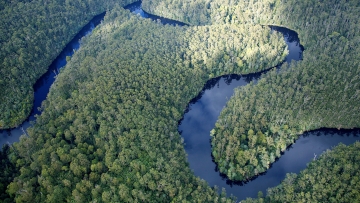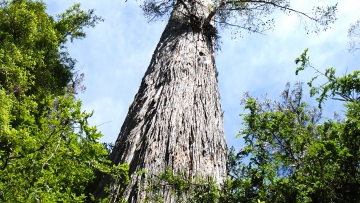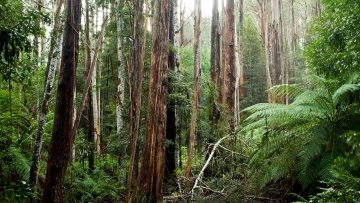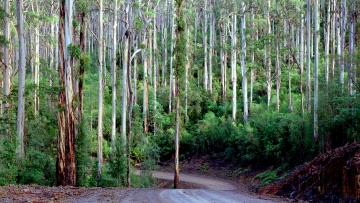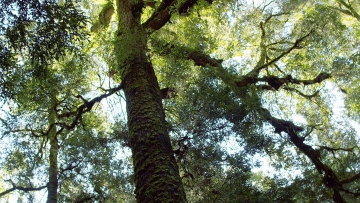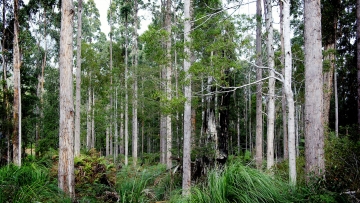
Old growth forest
What are old growth forests?
Old growth forests are mature forests where the effects of any previous disturbance are now negligible. Old growth forests have many special values which the forest management system and forest managers seek to balance.
They are ecologically important because they provide habitat in a range of tree sizes, large logs and trees with hollows. Their aesthetic and cultural values are recognised as being important to the Tasmanian community.
They are also a source of valuable high-quality eucalypt sawlogs and special timbers, such as myrtle and celery-top pine used by craftsmen and specialist furniture makers.
Sustainable Timber Tasmania manages its forests, including old growth forests to sustainably balance these competing values.
Protection of old growth forests
Old growth forest occurs across all land tenures. Of the 1.2 million hectares of forests classified as old growth in Tasmania, 85 per cent, or over one million hectares is permanently protected in reserves. This area exceeds the Tasmanian Government’s obligation, under Australia’s nationally agreed reserve criteria, to reserve at least 60 per cent of its old growth forests.
Less than four per cent, or 35,700 hectares, of old growth forest is potentially available for timber production on land managed by Sustainable Timber Tasmania.
Giant trees
Some areas of old growth forest contain giant trees. Tasmania’s giant trees are the tallest hardwoods in the world.
Sustainable Timber Tasmania has a Giant Tree Policy, which requires all trees over 85 metres in height or 280 cubic metres in volume to be protected.
Harvesting in old growth forests
During 2015/16 Sustainable Timber Tasmania completed its transitioning out of clearfelling Coupes Containing Old Growth (those with more than 25 per cent mapped old growth). From 2016/17 no Coupes Containing Old Growth will be clearfelled.
Into the future, small amounts of harvesting will continue in the old growth forests that have been designated as production forest. Sustainable Timber Tasmania needs this timber so that we can honour our contracts to supply high quality sawlogs and veneer logs and special timbers to local sawmills.
We use a number of methods to retain old growth values in harvested areas, including:
- A planning system that retains mature habitat across the production forest landscape
- Using partial harvesting methods, to leave patches of standing forest in the harvesting area
- Using selective harvesting methods to harvest special timbers
